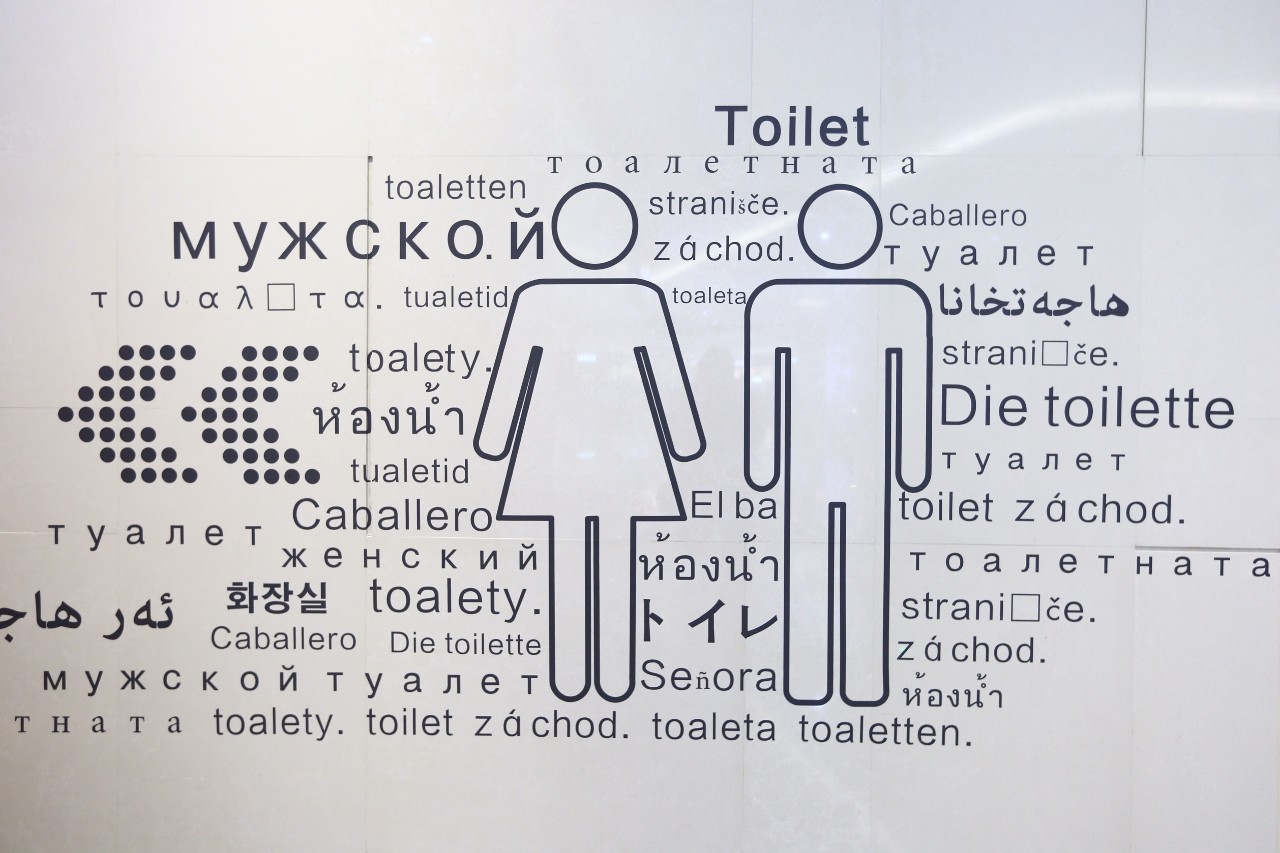While search engine optimization (SEO) in a single language is challenging enough, there are even more hurdles to overcome in keeping a multilingual site optimized for top search results. Nevertheless, getting this process right is fundamental to your success here.
Clearly organizing your content by language serves a few important purposes:
- It allows users to easily navigate your website in their preferred language, making their experience smooth and frustration-free
- Google promotes websites that have clear distinctions between content in multiple languages and effective organization allows
- Good organization allows Google’s website crawlers to easily determine which language you are targeting and deliver the most appropriate results to your searchers
- It will result in better SEO performance overall, meaning greater traffic and an audience that is more likely to be engaged with your content
This article will provide tips on how to organize your website’s SEO when targeting Japanese users, but much of this advice also applies to multilingual sites in any language.
Is SEO in Japanese Actually Different?
SEO is different in Japan in the sense that you’ll be using a whole new language and targeting searchers who may have entirely different motivations and preferences than ones you’re used to targeting, which will affect people’s search intent and how your content should be presented. But, Google is still Google, and your Japanese web content will be evaluated in much the same way as your English content is. Broadly, this will include the following:
- Content should be geared towards making the user experience better and providing people with genuine value
- Your website should be easy for Google to understand so that it can determine who it should be presented to
Ground Your Strategy in Japanese Keyword Research

Keyword research (not keyword translation) should be your first step in building a website that performs well in Japan. Many of the more technical changes you make to the site should be done with an understanding of the best keywords and phrases that will put you in front of the right people in Japan.
Without this, your website may make more sense for the average Japanese user, but it won’t be fully optimized for your purposes, which should be to appear in the right search results and deliver content that matches the intent of your users.
For example, the keyword used to describe one of your core services in English might not have a direct translation. Or even if there is one, this might not be the best target term for your Japanese SEO content, and optimizing your site around it will put you at a disadvantage if your competitors are targeting more relevant keywords with higher search volumes.
Audit Your Keywords
Ask yourself whether the keywords you’re already using are relevant to Japanese users and your site’s content. If not, implement a diligent keyword research process that actually determines what your core demographics are searching for and how you can match your online content to this intent.
Use Native Japanese-speaking SEO Specialists
The best route to discovering the most effective keywords is to hire SEO specialists. But if you’re on a tight budget, an alternative is doing it yourself with the assistance of native-speaking translators or copywriters.
Creating a strong SEO and content marketing strategy from scratch with the help of native Japanese speakers who understand your target audience is the best way to create SEO content that truly resonates with searchers and what they’re looking for online.
Optimize Your Content Around Your Keywords
Once you have the right keywords in hand, there are several ways to optimize your website and move up in search rankings using SEO, and success typically often requires a long-term plan. For instance, choosing the right title and H1 tags, making sure your images are formatted correctly with alt text that features the right keywords, and adding relevant keywords to the content across your whole site, are all ways to achieve SEO success.
The actual performance of your content will rely on how well you understand your audience and what they’re searching for. While some commonalities might apply across the different markets you operate in, it’s crucial that your Japanese SEO strategy is built around your Japanese audience and it’s specific characteristics and preferences.
By making these changes, Google will be better able to crawl your content and make the decision that you are a reputable and relevant source, subsequently giving you a position that’s higher in search results.
HB Pro Tip: You might have content that ranks really well in your home market, but this doesn’t guarantee its success in Japan. Interests, values, opinions, and behavior can vary massively here and we believe understanding this is a cornerstone of an effective Japanese SEO strategy. Even if you’ve already launched your site, you can still focus on adapting your existing content so that it now focuses on the right keywords, whether that’s your blogs and articles or your core service pages.
Localize Visuals for Better UX

The user experience (UX) is intricately linked with SEO. The way Japanese consumers interact with brands and websites can be quite different from how their counterparts in other countries do. And as well as written content, UX applies to how your site is designed and organized.
Use Visuals That Appeal To Japanese Users
Visuals are incredibly important to how humans interpret the world and form impressions. A mistake many brands make when bringing their products to Japan and conducting SEO is not approaching visual graphics; web design and layout; and media like photography, videos, and infographics, with the same energy they offer written content.
In the end, the way your website looks will need to appeal to Japanese users for them to connect with it. One important error you can fix quickly is to replace photography that only features Western models and environments.
Even if you think your website looks universally slick and engaging, test your theory by showing it to Japanese users. While some brands use visual assets that intentionally feature foreign models and settings, to portray themselves as modern, exotic or ‘cool‘, consider whether the same approach works for you.
You may discover that content that is adapted to Japanese tastes and preferences will have a greater impact on your SEO. Japanese consumers are extremely sensitive to trends and have a natural love for domestic brands over foreign ones, so even the smallest details like the physical appearance of your models, the location of your product shoots and the general style of your website can influence whether people want to buy from you.
HB Pro Tip: Japanese consumers generally expect to see a lot more on the page in terms of text and images. If users discover a lack of such content, it may have a subconscious impact on the impression you make on them, potentially presenting doubts in their minds that you are not an established and trustworthy company who can cater to their needs.
For more information on Japanese UX preferences and website design trends, take a look at our blog post: Intriguing Japanese Web Design Trends and How to Cater to Users in Japan.
Adapt Your Link Building Strategy
There’s no point building links to a Japanese page from German and Finnish sites. Visitors are less likely to be interested in your content when they land, probably unable to read it, and it is more likely to look like spam to Google. It will also be much harder to gain the link in the first place. And all this will impact your SEO integrity.
To achieve strong links, create meaningful and engaging content in Japanese, focusing on original newsworthy information. It’s possible to translate content from English, but often it won’t get very much traction on Japanese media platforms.
Types of link-worthy content that work in Japan:
- Industry data and reports
- Consumer insights and studies
- Interviews with influential people
- Infographics
- Guest posts from influencers and industry experts
HB Pro Tip: Link building can be significantly harder in Japan. To stop yourself from wasting time on endless outreach activities, always hire native-speaking marketers and copywriters to identify authoritative sites and create high-quality content that is worth linking to. Media outlets and PR platforms are much less likely to link to you if you don’t have something truly newsworthy.
Looking for Some Quick Tips for SEO Japanese?
Mixing Languages

Try to keep languages clearly separated on your site so users don’t accidentally stumble into foreign text. Google’s web crawlers don’t use any code-level information to determine the language of a page, they essentially read it as any person would.
Therefore content should generally be in one language on every page of your website. If Google’s crawlers read a page with content in multiple languages, they may not understand which language the page is targeting. This could result in only some or none of your content getting placed in relevant search results.
Google also recommends avoiding side-by-side translations of content on a single page. Instead, create an experience where your site can be explored completely in one language at a time.
If you can’t avoid it, Google advises blocking pages with multilingual content from being scanned by their web crawlers. However, we recommend not blocking pages unless absolutely necessary so you should try not to do this if possible.
Exceptions For Japan
There are sometimes exceptions to this rule when it comes to Japanese websites. It might be necessary to mix roman and Japanese characters in some cases to provide the best user experience.
For example, having some English flair on your site can be a good way to draw attention from Japanese readers who are accustomed to seeing various English terms and phrases used in marketing content.
Additionally, some Japanese keywords will include Roman based characters such as “SNS.” When in doubt, go for the most “natural-sounding” content possible by having native speakers create or check your word choices.
To be sure you get it right, it’s best to work with a partner who is familiar with SEO in Japanese and creating multilingual websites. Local experts will be sure to make your content sound natural and implement code level tactics that can improve your SEO integrity for your target market
Need SEO Support? Let us Know!
Address Your Targeting for SEO in Japanese

It’s best to have an in-country domain name for each target market, rather than using subdomains or subfolders of your main site. Many search engines give priority to high-level in-country domain names, such as www.brandname.fr or www.brandname.de. This is particularly important in China for example, since Baidu strongly favors local sites.
We recommend localizing your website everywhere you possibly can as Google looks for signals and integrations to understand who your website’s content is targeting. You can easily optimize your site to make sure they get it right. Country-specific domains (.jp, .co.jp, .co.uk) are one of the main indicators for regional targeting.
If you have a generic top-level domain (.com, .edu, .org) then other information is analysed from your website and several other sources to determine who you’re targeting and where you content should be placed, including:
- Addresses in your website copy
- Your IP address
- Data from external links to determine.
- The Google Maps address on your Google My Business Page and Google Maps
If all of this fails, you can also directly tell Google who you are targeting via their international targeting report. Just remember that all of the above factors aren’t just for crawling purposes. Implementing them will help your site be more relevant to users in your target country or region, thus providing a better user experience.
Japanese Domains for SEO
Japan has multiple country specific domains, but .jp and .co.jp are the most common ones. There are some requirements to apply for such domains though:
- .co.jp domains can only be used by companies that are officially incorporated in Japan, or officially registered as a foreign company in Japan.
- .jp domains can be used by any person or company with a permanent postal address in Japan.
HB Pro Tip: If you’re looking to buy a Japan-specific domain, feel free to check with us. We can help you make sure you’re choosing the best fit for your website’s SEO in Japanese and other languages.
Organize Your URLs Clearly By Language
Be sure to separate different language versions of the same page into unique URLs. Each translation of a page should have its own, clearly marked, URL.
Additionally, Google discourages websites using cookie-based systems to automatically translate pages based on user settings. Though this sounds like a good idea in practice, it actually hides the user’s ability to choose the language they are most comfortable with. Implementing such systems could result in Google’s crawlers missing the content entirely. And this will hinder your chances for high search rankings.
Additionally, automatic redirections based on the users’ language settings can also interfere with Google’s website crawlers. For the best multilingual SEO results, allow your readers to choose their language easily, and clearly indicate which version of the site they are on with a unique URL.
HB Pro Tip: If you take a quick look at our site, all Japanese content is organized under /JA/. This clearly shows users and Google which version of the website they are on.
Provide a Clear Path to Content in Each Language

Switching from one language to another should never be more than a click or two away. Most sites provide language selection in the header or footer so that it is on every page. Additionally, be sure that the link is clear and understandable to the reader that speaks the language they are trying to find content in.
For example, don’t use the Japanese characters for “English” on the button that takes the user to the English website, the English speaker definitely won’t be able to read it. If a user is on your site in the wrong language, they should at least be able to find and read the language selection button in their native language.
Flags Vs Text For Language Selection
Many websites and interfaces use a country’s flag to help users select their language preferences. This would work for a language like Japanese, since there are no other countries in the world that speak Japanese.
Spanish, on the other hand, is spoken in dozens of countries and doesn’t have a single flag that could represent it. Remember that flags represent countries, not languages, sometimes making them vague and confusing during language selection.
Checklist for Multilingual SEO in Japanese
Whenever you’re making a decision about how to lay out your website, remember that the end goal is for users to come to your site and explore it with ease. Even if your site is somehow bringing in great traffic, it’s all useless if users aren’t interacting with your site as you’d planned e.g. spending time absorbing your messages and following links to other content as part of a planned sales funnel.
- Organise your website around Japanese keywords – Above all else, make sure you have professionals who can translate and localise your content based on the right keywords for your target market.
- Fix your website’s structure – Navigation between languages should be frictionless and your site should be structured in a way that tells Google who you are targeting.
- Make language selection easy – Navigation between languages should be frictionless. Remember, you can use geotargeting to deliver languages based on user locations, but this doesn’t help users who are living/travelling in foreign-speaking countries or using VPNs.
- Content localization – Much like keywords, you can’t simply translate all of your English content and expect foreign audiences to engage with it. You must localise your content strategy to cater to the unique interests of each audience and create unique content to match — in their own language — where required.
In the most basic sense, SEO in Japanese is the same as SEO in other languages. The user’s experience is the key principle that you should consider before making changes to your site. But if you have some questions about how it all works, don’t hesitate to get in touch.
Don’t hesitate to ask if you have any other question about implementing SEO or any other digital marketing strategies to support your website, we’d be glad to share our expertise!